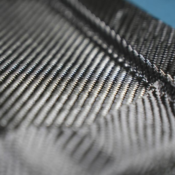
Why a Single Carbon Fiber Part Takes 15 Days, but 20 Pieces Take 30 Days – Complete Guide to Carbon Fiber Production Time
Have you ever wondered why producing one custom carbon fiber part might take just 15 days, but a batch of 20 pieces can take 30 days?
The answer lies in the manufacturing process, mold efficiency, and strict quality control that ensure every part meets high standards.
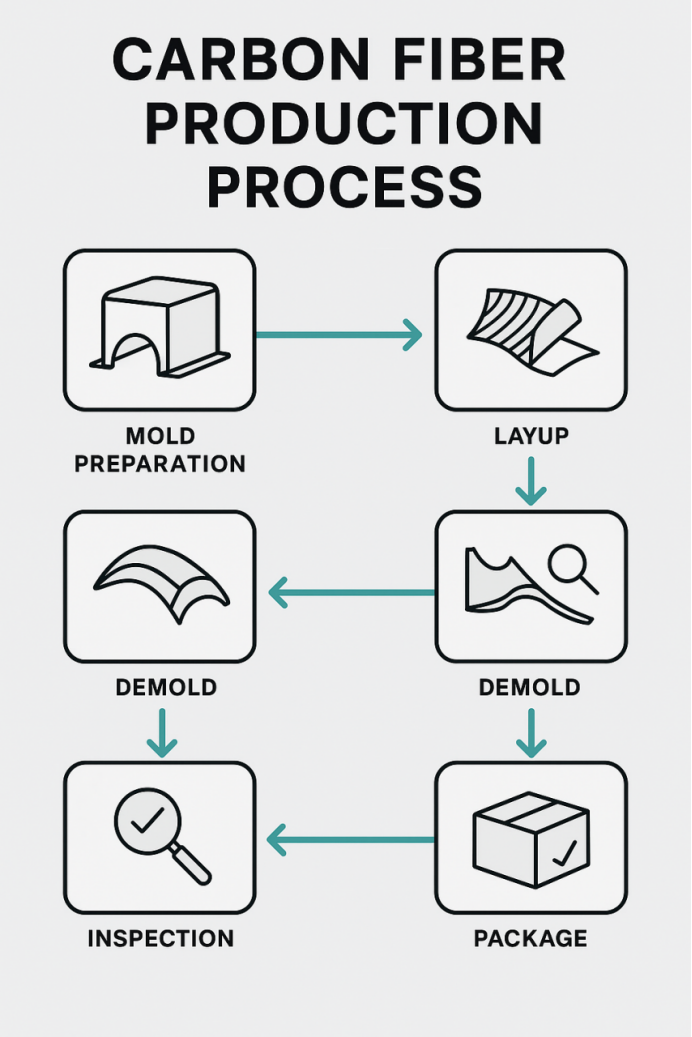 Producing high-quality carbon fiber parts is not just about shaping material—it’s a multi-step process that requires precision and time.
Here’s a simplified breakdown of the steps:
Producing high-quality carbon fiber parts is not just about shaping material—it’s a multi-step process that requires precision and time.
Here’s a simplified breakdown of the steps:
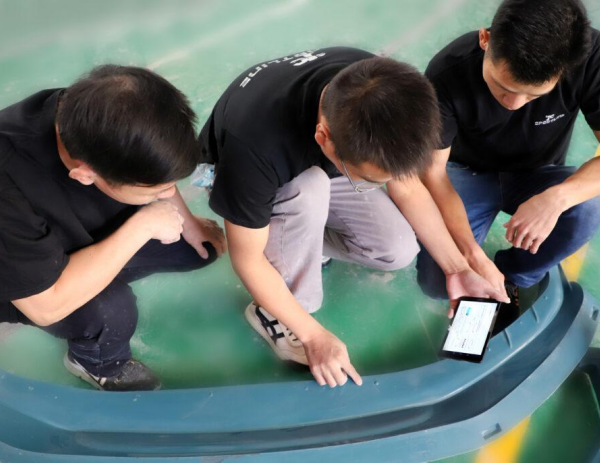 Simple molds for small parts can be reused quickly, but complex molds—such as those for large body panels—require:
Simple molds for small parts can be reused quickly, but complex molds—such as those for large body panels—require:
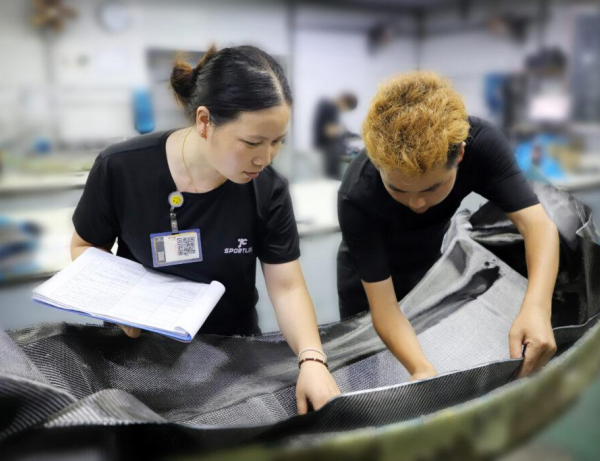 Strict quality assurance (QA) is essential for automotive-grade carbon fiber components:
Strict quality assurance (QA) is essential for automotive-grade carbon fiber components:
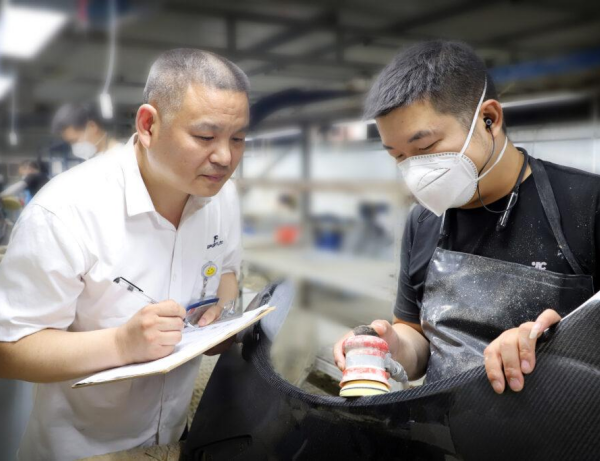 When producing a single carbon fiber part, the manufacturing flow is straightforward—one mold cycle, one quality check.
But in batch production:
When producing a single carbon fiber part, the manufacturing flow is straightforward—one mold cycle, one quality check.
But in batch production:
 For distributors, auto tuners, and custom car builders, understanding carbon fiber production lead times is essential for:
For distributors, auto tuners, and custom car builders, understanding carbon fiber production lead times is essential for:
1. Understanding the Carbon Fiber Manufacturing Process
 Producing high-quality carbon fiber parts is not just about shaping material—it’s a multi-step process that requires precision and time.
Here’s a simplified breakdown of the steps:
Producing high-quality carbon fiber parts is not just about shaping material—it’s a multi-step process that requires precision and time.
Here’s a simplified breakdown of the steps:
- Mold preparation – The mold is cleaned, polished, and treated to ensure a smooth release.
- Layering and resin application – Carbon fiber sheets are cut, placed into the mold, and impregnated with resin.
- Vacuum bagging or autoclave curing – This step removes air bubbles and strengthens the part.
- Cooling and demolding – The part is removed and checked for defects.
- Trimming, sanding, and finishing – Surfaces are refined for a perfect fit and look.
- Final inspection – Every part undergoes a strict quality check before packing.
- Key takeaway: Each step has a fixed time requirement that doesn’t scale perfectly when producing more parts.
2. Mold Efficiency – The Real Bottleneck
 Simple molds for small parts can be reused quickly, but complex molds—such as those for large body panels—require:
Simple molds for small parts can be reused quickly, but complex molds—such as those for large body panels—require:
- Longer curing times
- Careful cleaning between cycles
- Precision re-coating for every use
3. Quality Control – Why It Adds Time, Not Just Value
 Strict quality assurance (QA) is essential for automotive-grade carbon fiber components:
Strict quality assurance (QA) is essential for automotive-grade carbon fiber components:
- Every piece is checked for cracks, air bubbles, or uneven resin.
- Defective parts are reworked or remade, which extends production time.
- This process ensures the final product meets international standards for strength, weight, and appearance.
4. Why Batches Take Longer Than Single Orders
 When producing a single carbon fiber part, the manufacturing flow is straightforward—one mold cycle, one quality check.
But in batch production:
When producing a single carbon fiber part, the manufacturing flow is straightforward—one mold cycle, one quality check.
But in batch production:
- The mold must be cycled multiple times.
- QA is done for each part individually.
- Logistics and packing take longer.
5. How This Affects Your Business Planning
 For distributors, auto tuners, and custom car builders, understanding carbon fiber production lead times is essential for:
For distributors, auto tuners, and custom car builders, understanding carbon fiber production lead times is essential for:
- Accurate order scheduling
- Inventory management
- Avoiding delays in client deliveries
6. Get a Custom Production Plan
At JCSPORTLINE, we can tailor production schedules to meet your needs:- Custom lead times for urgent orders
- Flexible mold allocation for large projects
- Transparent production updates for better planning
Recent Posts
jcsportline.com0 Comments
Custom Carbon Fiber Parts for Car Clubs & Teams: From Idea to Installation
jcsportline.com0 Comments
How Carbon Fiber Wrapped Parts Are Made: A Simple Guide for Car Enthusiasts
jcsportline.com0 Comments
How to Keep Carbon Fiber Car Parts Shipping and Installation Safe
Tags
adhesive layer control
Automotive Aftermarket
automotive composites
Brand Reputation
carbon fiber case study
Carbon Fiber Durability
carbon fiber engineering
carbon fiber failure prevention
carbon fiber for racing
carbon fiber interior
carbon fiber parts
Carbon Fiber Precision
carbon fiber production tips
carbon fiber prototype
Carbon Fiber QC
carbon fiber quality
carbon fiber simulation
carbon fiber vs aesthetics
carbon fibre
composite part development
custom carbon parts
DIY Installation
fake carbon fiber
Fitment Accuracy
fitment issues
functional carbon fiber parts
layup angle
Manufacturing Tolerances
motorsport carbon fiber
Mounting Point Failure
OEM Standards
original structure
Precision Manufacturing
Private Label Manufacturing
Quality Control Process
real carbon
real carbon fiber
resin flow control
Screw Hole Alignment
stress test carbon fiber
Supplier Reliability
Thread Quality
tuning shop carbon parts
User Experience
±0.3mm Tolerance



